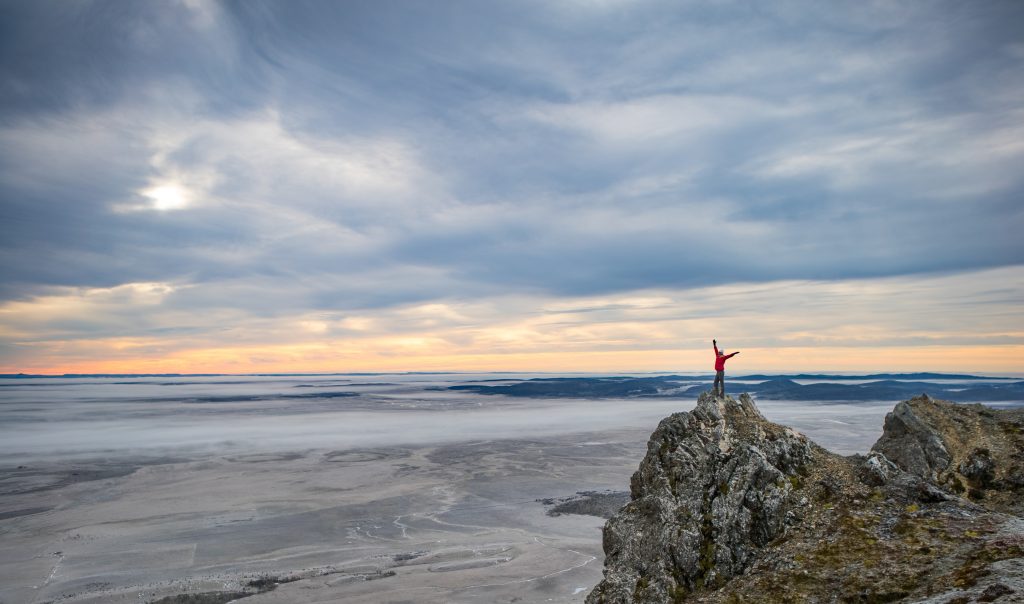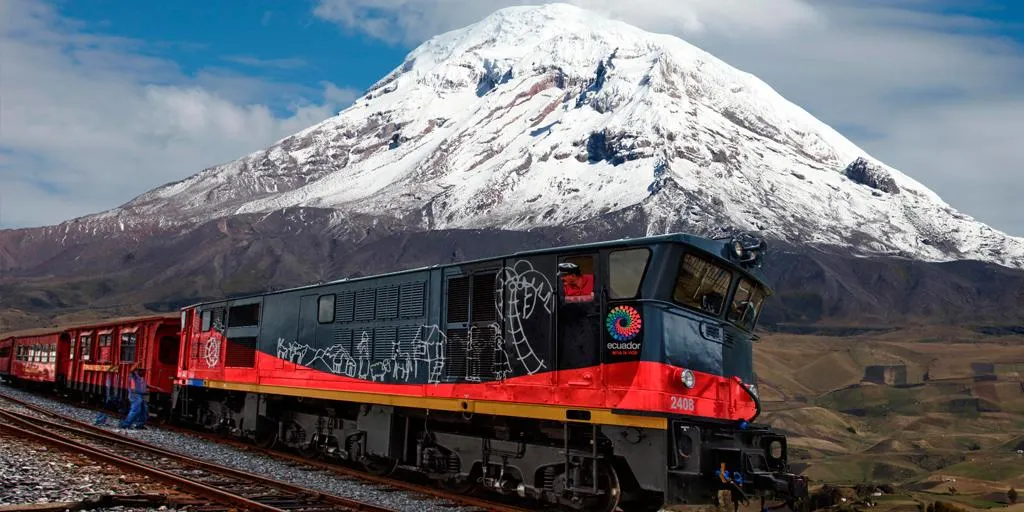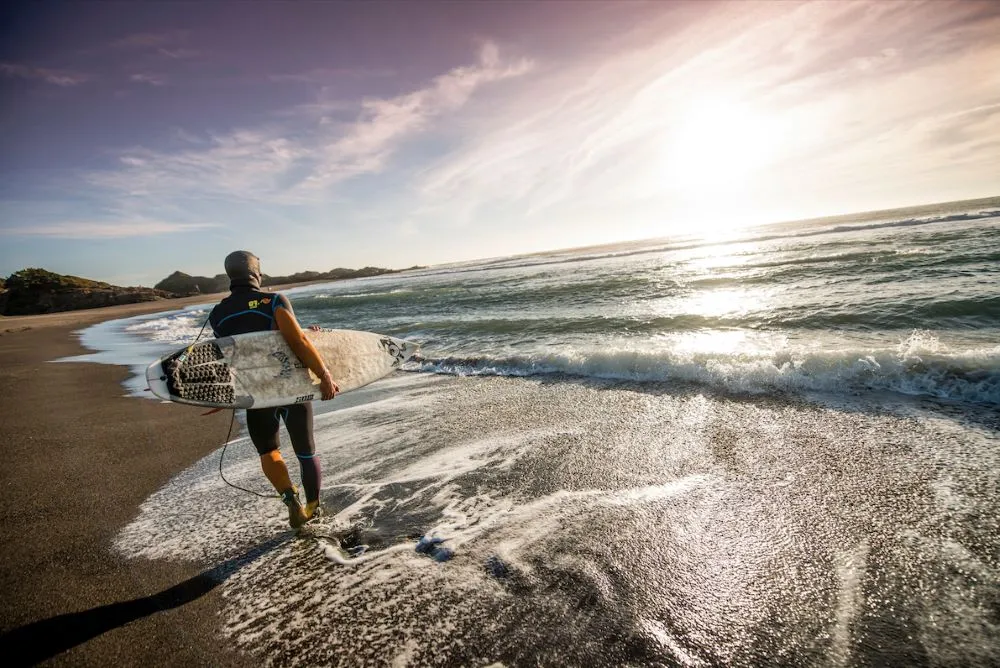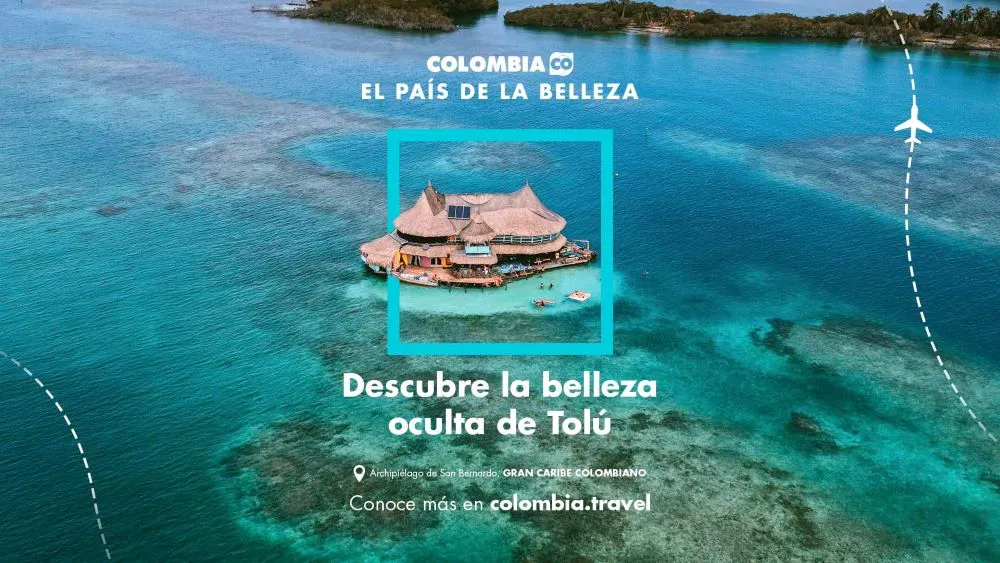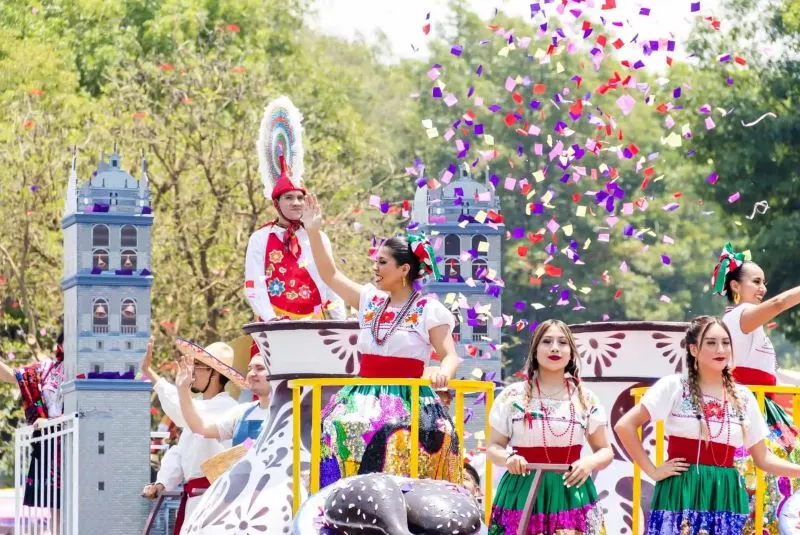Glaciers, parcs secrets, territoires vierges, tourisme scientifique, kayak, alpinisme, trekking et une partie de l’histoire de l’humanité font partie de l’expérience mystique, majestueuse et surprenante qu’offre l’île de la Terre de Feu.
La Terre de Feu, la plus grande île d’Amérique du Sud, attend silencieusement à la fin du continent, riche d’histoires qui embrassent une chronologie imaginaire allant de l’Holocène, avec des traces de peuplement précoce par des chasseurs-cueilleurs, jusqu’à l’époque moderne représentée par les pionniers, des hommes avides de richesses. On connaît la légende urbaine des immigrants qui, lorsqu’ils apercevaient l’horizon par temps clair, voyaient le ciel en flammes, une image qui captive encore aujourd’hui le visiteur. Ses premiers habitants, les Selk’nam, l’appelaient Karukinka, ce qui signifie « Notre Terre ».
Le tourisme conventionnel en Terre de Feu se caractérise par une excursion d’une journée à Porvenir, la place des Selk’nam, le musée puis le Parc des manchots royaux. Cependant, il existe une nouvelle offre très attrayante, le Parque Estromatolitos, une lagune naturelle dotée de l’infrastructure nécessaire pour être visitée et où il est possible de découvrir la vie des cyanobactéries, le premier être vivant au monde, que l’on ne trouve que dans 11 zones de la planète (le Chili en compte cinq).
“En collaboration avec le gouvernement régional, nous menons diverses actions en Terre de Feu dans le but de faire connaître et de positionner de manière responsable cette destination émergente, qui possède un énorme potentiel en termes de tourisme d’intérêt spécial, de conservation des paysages et des écosystèmes, de mise en valeur de la flore, de la faune et des paysages, et de valorisation de la culture et de l’identité locales”, explique Natalia Narbona Ramirez, directrice régionale de Sernatur pour les régions de Magallanes et de l’Antarctique chilien.
Ces dernières années, le tourisme d’intérêt particulier a gagné en importance à Magallanes, car il s’adresse à un public spécifique à la recherche d’expériences diverses et exclusives. “La pêche sportive est un créneau très puissant en Terre de Feu, en particulier à Rio Grande, qui est né dans le parc Karukinka. Nous avons également le tourisme scientifique, avec les blocs erratiques (fragments de granit) installés dans la Bahía Inútil, où l’on estime qu’il y a environ un millier de blocs, dont certains mesurent jusqu’à 16 mètres carrés. Une autre attraction incontournable est la visite des glaciers de la Cordillère Darwin et, bien sûr, les possibilités de faire du kayak, de l’alpinisme ou du trekking”, explique Marcelo Noria, Preseident de l’association des Guides de Terre de Feu et chercheur à l’unité de tourisme de l’université de Magallanes.
Faire le tour de la Terre de Feu
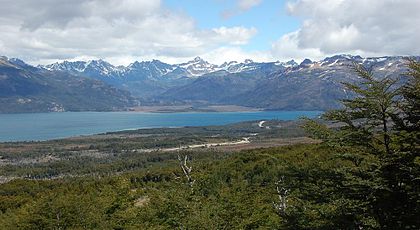
La Bahía Inútil (baie inutile), nom donné à l’époque des navigateurs à la recherche de nouveaux ports, est le lieu de nidification du manchot royal. En continuant le voyage à travers la Terre de Feu, nous arrivons au secteur de Russfin, où l’on peut découvrir une drague à godet, une machine ancienne conçue pour l’extraction de l’or et apportée d’Angleterre en 1904, déclarée Monument National en 1976.
En poursuivant le voyage jusqu’aux forêts du sud de l’île, on atteint le lieu sacré des Selk’nam, le lac Kami, baptisé “Lago Fagnano”.
“Le sud de la Terre de Feu a beaucoup à offrir en matière de tourisme d’intérêt particulier : il y a des rivières et des lacs pour la pêche sportive, le trekking pour découvrir de nouvelles montagnes ou la navigation pour profiter des attractions du détroit d’Almirantazgo, comme les colonies d’éléphants de mer, les albatros à sourcils noirs, les léopards de mer et les fjords comme Parry et Aonsworth”, explique Yenny Oyarzo, président de la Chambre de tourisme Timaukel en Terre de Feu.
Parc de Karukinka
Karukinka est un lieu unique au monde qui œuvre au développement de la conservation des paysages ainsi que des côtes de la Terre de Feu et de la Patagonie. À cette fin, des stratégies ont été conçues pour faire face aux menaces qui pèsent sur les écosystèmes, en mettant en œuvre des actions concrètes de conservation et de restauration écologique. C’est un laboratoire naturel qui offre des espaces pour coexister avec la nature, l’étudier, apprendre d’elle, agir pour en prendre soin et inspirer d’autres personnes à s’engager dans ces actions.
À Karukinka, le ciel est un paradis pour les ibis mandore, les cygnes à cou noir, les pics noirs (les plus grands d’Amérique du Sud), les conures magellanique, les mérulaxes, les cormorans, les albatros à sourcils noirs ou les condors. Ses côtes sont habitées par des loutres, des léopards de mer, des dauphin de Commerson, des lions de mer et des éléphants de mer du sud. Plus de 415 plantes vasculaires font partie du paysage végétal luxuriant où errent les renards de Magellan et les guanacos.
“Dans la partie méridionale de la Terre de Feu, vous pouvez faire l’expérience d’un tourisme à faible échelle et à faible impact. Bien que le développement du tourisme ait été lent, c’est ainsi qu’il devrait être et c’est ce que nous voulons pour qu’il n’y ait pas trop d’intervention. Tous ceux d’entre nous qui font du tourisme dans la région veulent que la Terre de Feu reste telle qu’elle est, intacte, et que la nature soit préservée. En outre, en tant que gardiens du parc Karukinka, qui est le territoire ancestral du peuple Selk’nam, nous avons un engagement très profond qui va au-delà du tourisme”, déclare Melissa Carmody, directrice du parc Karukinka.
Le peuple Selk’nam
Le peuple Selk’nam, également connu sous le nom d’Ona, était un peuple de chasseurs-cueilleurs arrivé sur l’île il y a plusieurs millénaires. Malgré les conditions climatiques difficiles et la relative rareté des ressources naturelles de l’île, la société Selk’nam a développé un système complexe de croyances et de rites religieux qui ont fait l’admiration des voyageurs européens qui ont visité la Terre de feu. La société Selk’nam était organisée en lignages qui habitaient des territoires communs de chasse et de cueillette, appelés haruwen.
“En tant que représentante du peuple Selk’nam, je peux témoigner de la volonté de la communauté Covadonga Ona de dialoguer et de partager les connaissances, afin que notre peuple et notre culture puissent être connus dans le respect”, déclare Hema’ny Molina, membre de la communauté indigène Covadonga Ona, présidente de la Selk’nam Chile Corporation et directrice de la recherche et de la protection de l’environnement de la Fondation Hach Saye.
Telle est la Terre de Feu : mystérieuse mais attirante, majestueuse et séduisante à la fois. Bref, une expérience naturelle, culturelle et mystique à vivre au moins une fois dans sa vie.
Source : Sernatur

